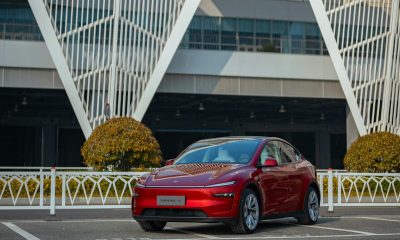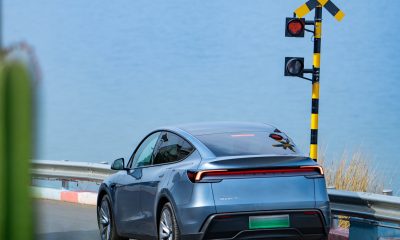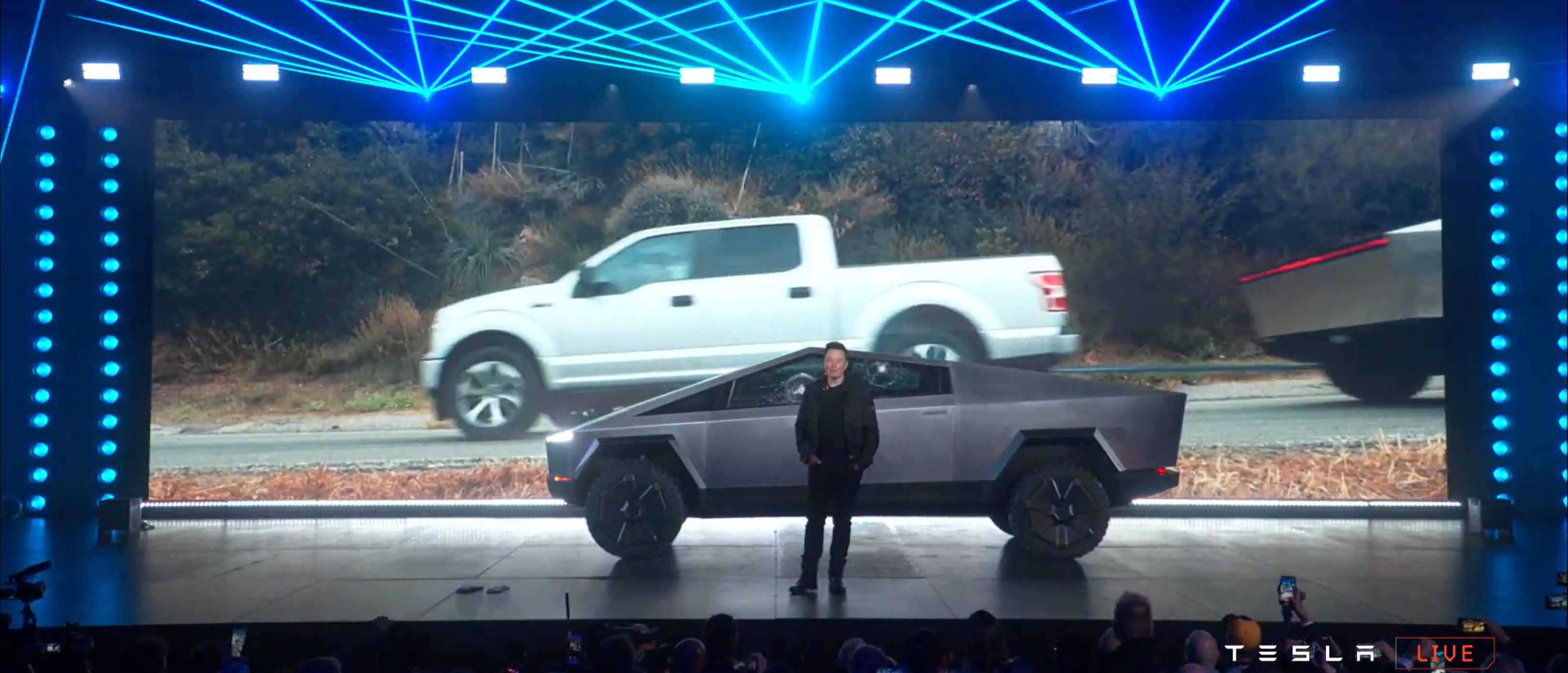

Lifestyle
Legacy auto still has a chance to win on electric pickup trucks, but will they take it?
Welcome to a FREE preview of our weekly exclusive! Each week our team goes ‘Beyond the News’ and handcrafts a special edition that includes our thoughts on the biggest stories, why it matters, and how it could impact the future.
You can receive this newsletter along with all of our other members-exclusive newsletters, become a premium member for just $3/month. Your support goes a long way for us behind the scenes! Thank you.
—
A recent consumer survey conducted by Autolist.com revealed some interesting indicators about the future of electric pickup trucks. On one hand, there’s still time for legacy auto makers to read the memo about the future of their industry with regard to power source. Decades of branding and (mild) innovations could pay off for them because their customers are watching what they’re doing and extending some good will based on the reputation they’ve built. Tesla might be playing a big role in the industry’s directional change, but they don’t necessarily win customers by default because of that role.
On the other hand, car buyers (as expected) don’t seem to be that into radical changes when making a personal transportation choice, but they could be convinced over time. In fact, Autolist’s survey might show that if big truck companies either don’t play ball in the EV transition or they only play half-heartedly, their industry leadership could be chipped away until things collapse altogether.
Let’s look at the survey’s data to break down why I think these things are indicated.
Out of about 1,100 people surveyed to choose one of four electric truck options, of which there was a 50/50 split between those who’d currently/previously owned a truck and those who never had, GM’s still non-existent future truck was the highest-ranked. Ford’s F-150 and Rivian’s R1T came in the middle, and the Tesla Cybertruck was ranked last. Although GM’s vehicle is sight-unseen, the number one reason those surveyed made it their number one choice was due to their trust and existing preference for the brand. Ford’s F-150 was primarily chosen by those people for the same reason as well.
These replies indicate that the billions invested in marketing and production over the years could pay off for GM and Ford in the EV sector. However, their brands of trucks were also expected to have good performance and be reliable, the number 2 and 3 reasons they were chosen. In other words, just putting their name on a vehicle won’t be enough in the long term. In fact, the number one reason why the Tesla Cybertruck was the first choice of those people was the expected performance. The cyberpunk look of the pickup didn’t even rank, and Tesla’s other investments – Autopilot and their charging network – were tied for reasons number 2 and 3 in those customer choices. Interestingly enough, the styling of Rivian’s R1T was the number one reason it was ranked by those responders by a long shot (75%).
It seems that the traditional “look” of a truck is pretty much preferred by customers, as expected by many, but as also expected by many, the performance is important enough to turn heads in unconventional directions. I mean, this is all probably just preaching to the choir for lots of EV watchers and so forth, but seeing some data come in to validate the opinions is interesting.
Another interesting breakdown in the survey that somewhat validates both camps on whether Cybertruck can appeal to enough buyers to be considered successful is that among prior and current truck owners, only 14% preferred it over the other three options. GM’s unseen truck was preferred by 35% of respondents, Ford by 28%, and Rivian by 23%. I’d say that is definitely validation for people saying that “truck” people like their trucks to look like what they’ve come to think trucks should look like. Cybertruck, however, was the number one choice of those who’d never owned a truck before. But, I think there’s still a caveat here.
Cybertruck may have been the number one truck choice for first-time truck buyers, but that number one rank was nearly even with the other three choices. Tesla’s pickup came in at 25.8%, Rivian’s R1T was 24.8%, and the F-150 and GM trucks tied at 24.7% – all are within a percentage of one another. So, even among people that might be more open-minded about what a truck should look like, Cybertruck is still only appealing to a minority of consumers. Overall, it looks like 75% of even first time truck buyers want one that looks traditional, and 85% of current/prior truck owners want the old look as well.
Yet still, the “big guys” don’t really have the wiggle room to loose even the smaller percentage of people that want something different in a truck. As many commenters pointed out under Teslarati’s report on this survey, GM has some workforce headaches and retirement obligations that make its bottom profit line very thin.
Already, it’s tough for union-weighted factories to make significant changes to their product lineups because workers’ jobs are threatened by various parts of the innovations, thus strikes and shutdowns and bankruptcies are always looming. If GM and other companies with similar balancing acts can’t make enough changes to get their electric trucks to compete with the performance of Cybertruck (and perhaps the R1T), they’re going to leak customers where they just can’t afford to leak them, and when customers leave…so goes their money. Shareholders will only tolerate so much squeezing (or so it seems).
Tesla is already hitting hard with a $40k truck whose performance expectations are incredible. If their competition can’t play ball with those specs on something that looks traditional, losing money along the way, they could end up losing the “big” game (i.e., shut down completely) and have to bow out to Tesla and Rivian altogether. Tesla could also go in for the kill move, too, and just put something out there for the same price range and specs as Cybertruck that looks fairly “normal” to scoop up GM’s and Ford’s customer holdouts over style.
We shall see. Isn’t speculation fun?
Elon Musk
X account with 184 followers inadvertently saves US space program amid Musk-Trump row
Needless to say, the X user has far more than 184 followers today after his level-headed feat.

An X user with 184 followers has become the unlikely hero of the United States’ space program by effectively de-escalating a row between SpaceX CEO Elon Musk and President Donald Trump on social media.
Needless to say, the X user has far more than 184 followers today after his level-headed feat.
A Near Fall
During Elon Musk and Donald Trump’s fallout last week, the U.S. President stated in a post on Truth Social that a good way for the United States government to save money would be to terminate subsidies and contracts from the CEO’s companies. Musk responded to Trump’s post by stating that SpaceX will start decommissioning its Dragon spacecraft immediately.
Musk’s comment was received with shock among the space community, partly because the U.S. space program is currently reliant on SpaceX to send supplies and astronauts to the International Space Station (ISS). Without Dragon, the United States will likely have to utilize Russia’s Soyuz for the same services—at a significantly higher price.
X User to the Rescue
It was evident among X users that Musk’s comments about Dragon being decommissioned were posted while emotions were high. It was then no surprise that an X account with 184 followers, @Fab25june, commented on Musk’s post, urging the CEO to rethink his decision. “This is a shame this back and forth. You are both better than this. Cool off and take a step back for a couple days,” the X user wrote in a reply.
Much to the social media platform’s surprise, Musk responded to the user. Even more surprising, the CEO stated that SpaceX would not be decommissioning Dragon after all. “Good advice. Ok, we won’t decommission Dragon,” Musk wrote in a post on X.
Not Planned, But Welcomed
The X user’s comment and Musk’s response were received extremely well by social media users, many of whom noted that @Fab25june’s X comment effectively saved the U.S. space program. In a follow-up comment, the X user, who has over 9,100 followers as of writing, stated that he did not really plan on being a mediator between Musk and Trump.
“Elon Musk replied to me. Somehow, I became the accidental peace broker between two billionaires. I didn’t plan this. I was just being me. Two great minds can do wonders. Sometimes, all it takes is a breather. Grateful for every like, DM, and new follow. Life’s weird. The internet’s weirder. Let’s ride. (Manifesting peace… and maybe a Model Y.)” the X user wrote.
Lifestyle
Tesla Cybertruck takes a bump from epic failing Dodge Charger
The Cybertruck seemed unharmed by the charging Charger.
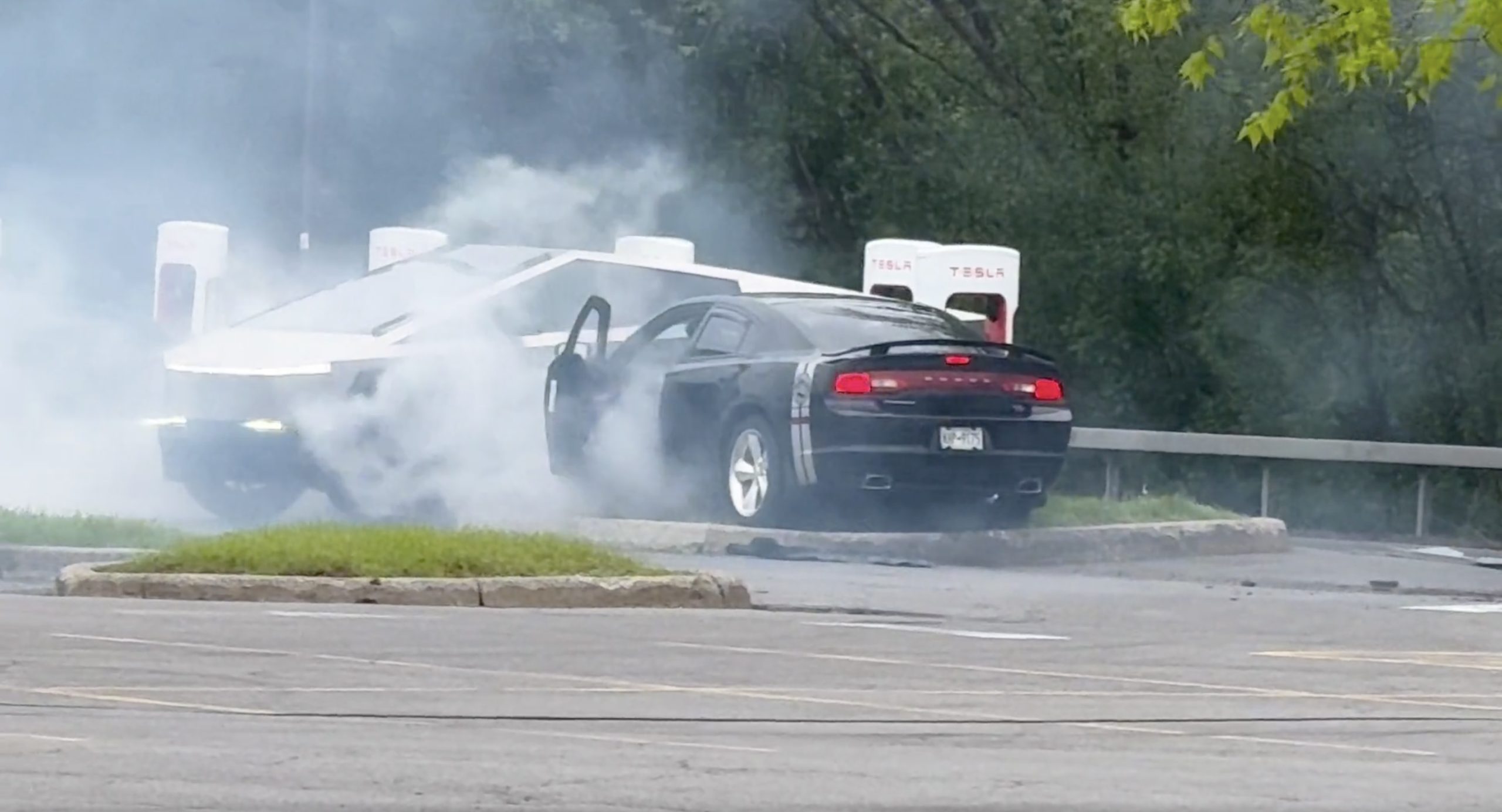
There comes a time in a driver’s life when one is faced with one’s limitations. For the driver of a Dodge Charger, this time came when he lost control and crashed into a Tesla Cybertruck–an absolute epic fail.
A video of the rather unfortunate incident was shared on the r/TeslaLounge subreddit.
Charging Charger Fails
As could be seen in the video, which was posted on the subreddit by Model Y owner u/Hammer_of_something, a group of teens in a Dodge Charger decided to do some burnouts at a Tesla Supercharger. Unfortunately, the driver of the Charger failed in his burnout or donut attempt, resulting in the mopar sedan going over a curb and bumping a charging Cybertruck.
Ironically, the Dodge Charger seemed to have been parked at a Supercharger stall before its driver decided to perform the failed stunt. This suggests that the vehicle was likely ICE-ing a charging stall before it had its epic fail moment. Amusingly enough, the subreddit member noted that the Cybertruck did not seem like it took any damage at all despite its bump. The Charger, however, seemed like it ran into some trouble after crashing into the truck.
Alleged Aftermath
As per the the r/TeslaLounge subreddit member, the Cybertruck owner came rushing out to his vehicle after the Dodge Charger crashed into it. The Model Y owner then sent over the full video of the incident, which clearly showed the Charger attempting a burnout, failing, and bumping into the Cybertruck. The Cybertruck owner likely appreciated the video, in part because it showed the driver of the Dodge Charger absolutely freaking out after the incident.
The Cybertruck is not an impregnable vehicle, but it can take bumps pretty well thanks to its thick stainless steel body. Based on this video, it appears that the Cybertruck can even take bumps from a charging Charger, all while chilling and charging at a Supercharger. As for the teens in the Dodge, they likely had to provide a long explanation to authorities after the incident, since the cops were called to the location.
Lifestyle
Anti-Elon Musk group crushes Tesla Model 3 with Sherman tank–with unexpected results
Ironically enough, the group’s video ended up highlighting something very positive for Tesla.
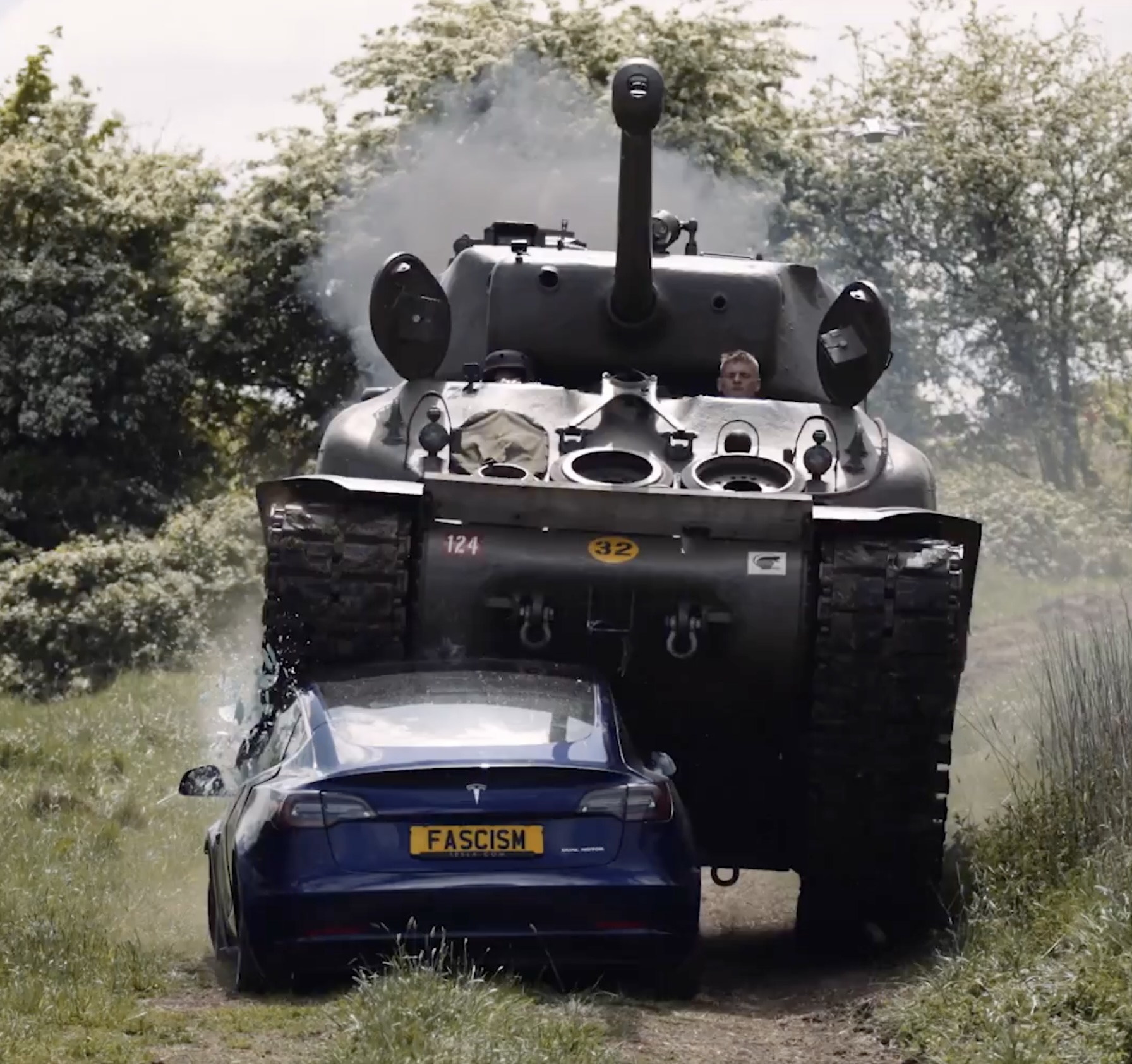
Anti-Elon Musk protesters and critics tend to show their disdain for the CEO in various ways, but a recent video from political action group Led By Donkeys definitely takes the cake when it comes to creativity.
Ironially enough, the group’s video also ended up highlighting something very positive for Tesla.
Tank vs. Tesla
In its video, Led By Donkeys featured Ken Turner, a 98-year-old veteran who served in the British army during World War II. The veteran stated that Elon Musk, the richest man in the world, is “using his immense power to support the far-right in Europe, and his money comes from Tesla cars.”
He also noted that he had a message for the Tesla CEO: “We’ve crushed fascism before and we’ll crush it again.” To emphasize his point, the veteran proceeded to drive a Sherman tank over a blue Tesla Model 3 sedan, which, of course, had a plate that read “Fascism.”
The heavy tank crushed the Model 3’s glass roof and windows, much to the delight of Led By Donkeys’ commenters on its official YouTube channel. But at the end of it all, the aftermath of the anti-Elon Musk demonstration ended up showcasing something positive for the electric vehicle maker.
Tesla Model 3 Tanks the Tank?
As could be seen from the wreckage of the Tesla Model 3 after its Sherman encounter, only the glass roof and windows of the all-electric sedan were crushed. Looking at the wreckage of the Model 3, it seemed like its doors could still be opened, and everything on its lower section looked intact.
Considering that a standard M4 Sherman weighs about 66,800 to 84,000 pounds, the Model 3 actually weathered the tank’s assault really well. Granted, the vehicle’s suspension height before the political action group’s demonstration suggests that the Model 3’s high voltage battery had been removed beforehand. But even if it hadn’t been taken off, it seemed like the vehicle’s battery would have survived the heavy ordeal without much incident.
This was highlighted in comments from users on social media platform X, many of whom noted that a person in the Model 3 could very well have survived the ordeal with the Sherman. And that, ultimately, just speaks to the safety of Tesla’s vehicles. There is a reason why Teslas consistently rank among the safest cars on the road, after all.
-

 Elon Musk2 days ago
Elon Musk2 days agoTesla investors will be shocked by Jim Cramer’s latest assessment
-

 News7 days ago
News7 days agoTesla Robotaxi’s biggest challenge seems to be this one thing
-

 News2 weeks ago
News2 weeks agoTesla’s Grok integration will be more realistic with this cool feature
-

 Elon Musk2 weeks ago
Elon Musk2 weeks agoElon Musk slams Bloomberg’s shocking xAI cash burn claims
-

 News2 weeks ago
News2 weeks agoTesla China roars back with highest vehicle registrations this Q2 so far
-

 News2 weeks ago
News2 weeks agoTexas lawmakers urge Tesla to delay Austin robotaxi launch to September
-

 News2 weeks ago
News2 weeks agoTesla dominates Cars.com’s Made in America Index with clean sweep
-

 Elon Musk1 week ago
Elon Musk1 week agoFirst Look at Tesla’s Robotaxi App: features, design, and more










